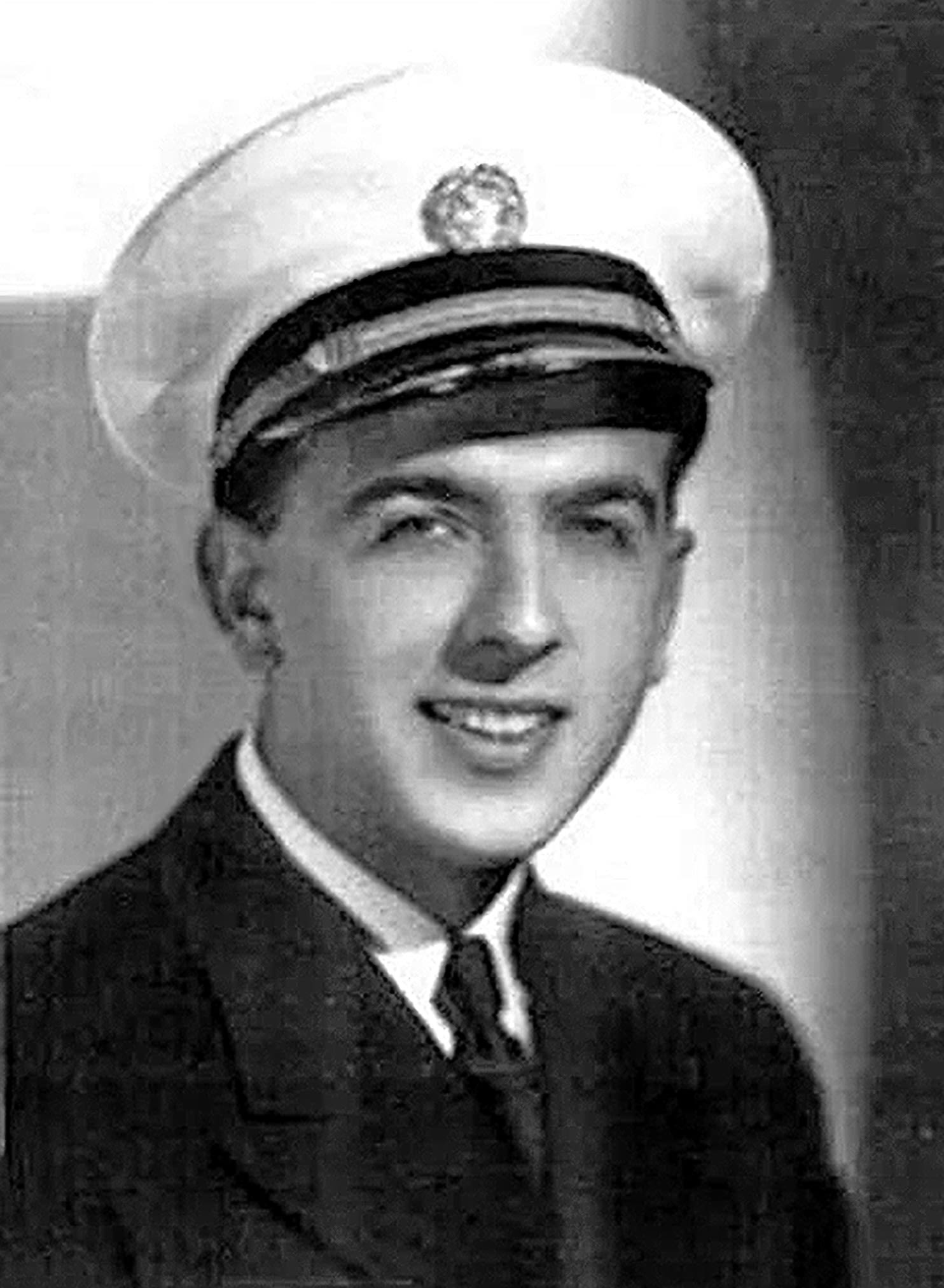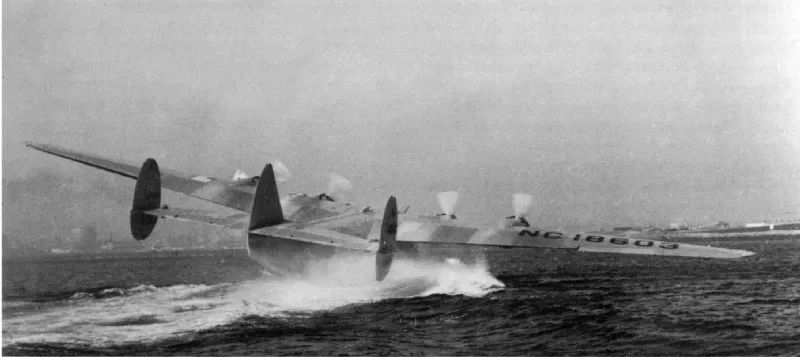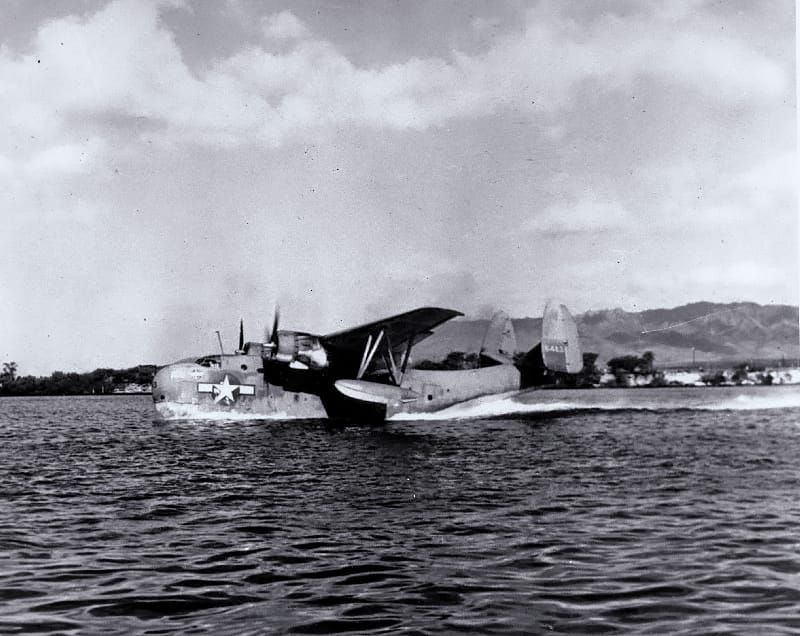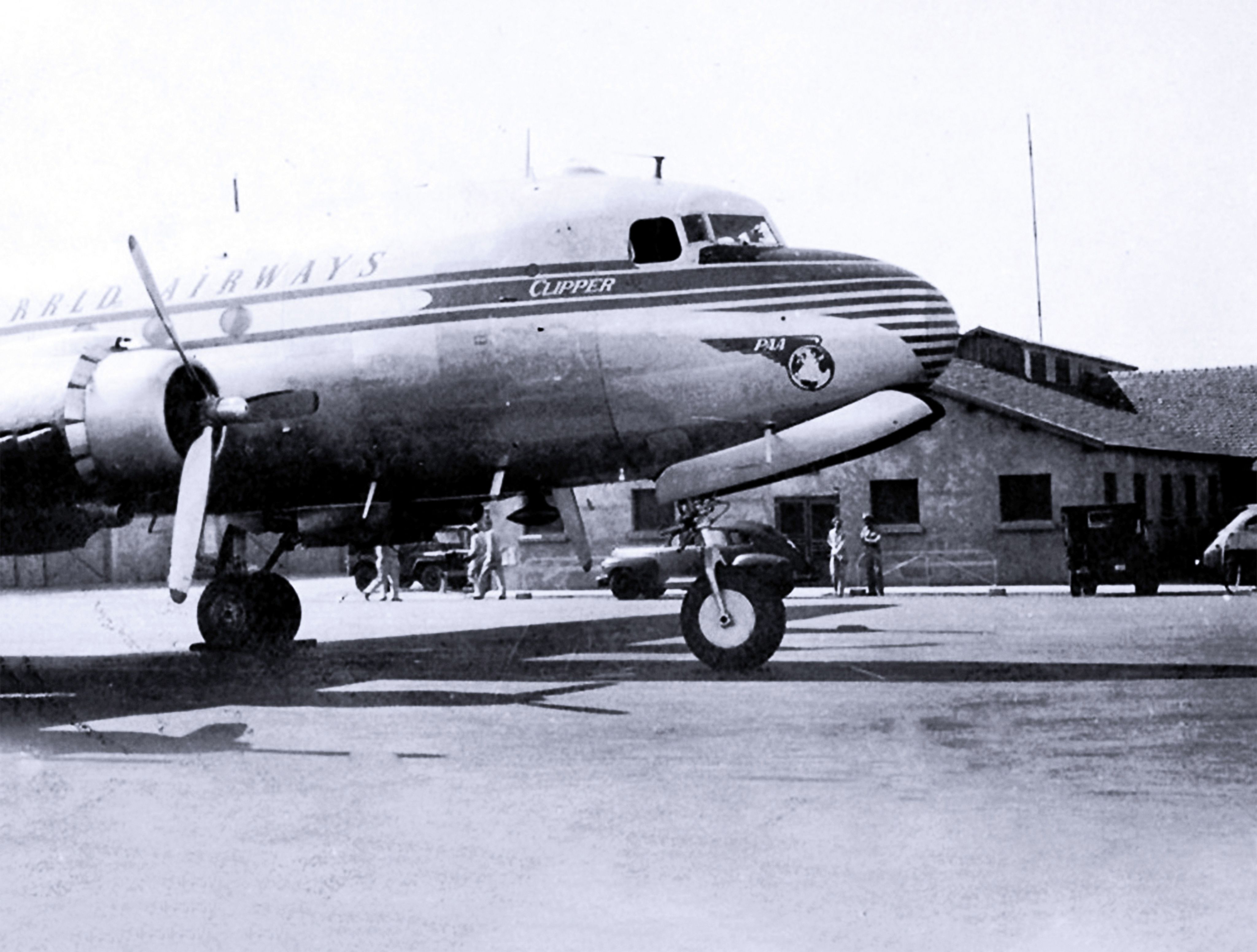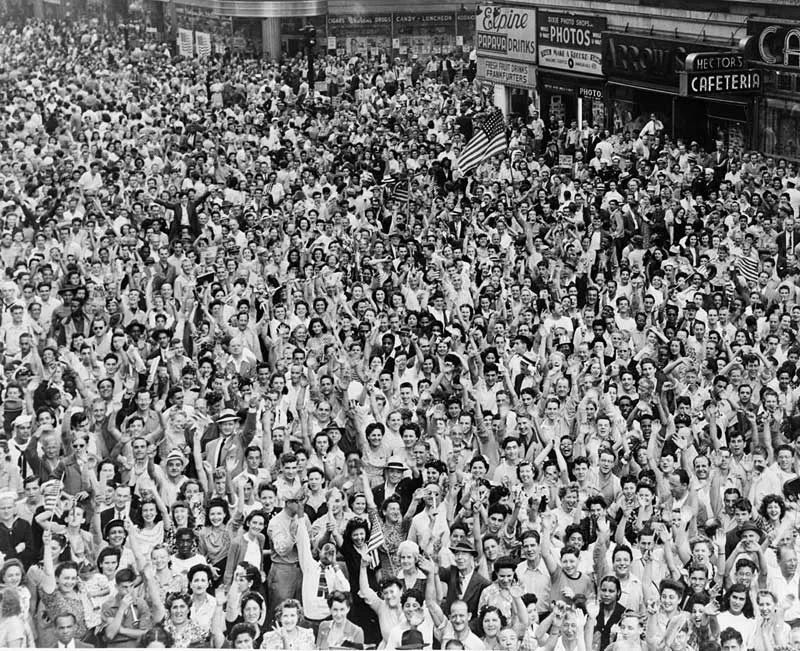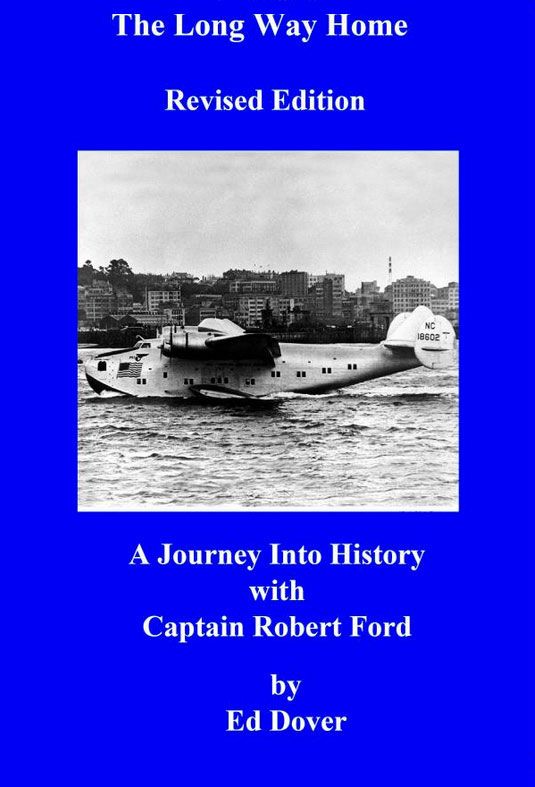B-314 MEMORIES
Part One
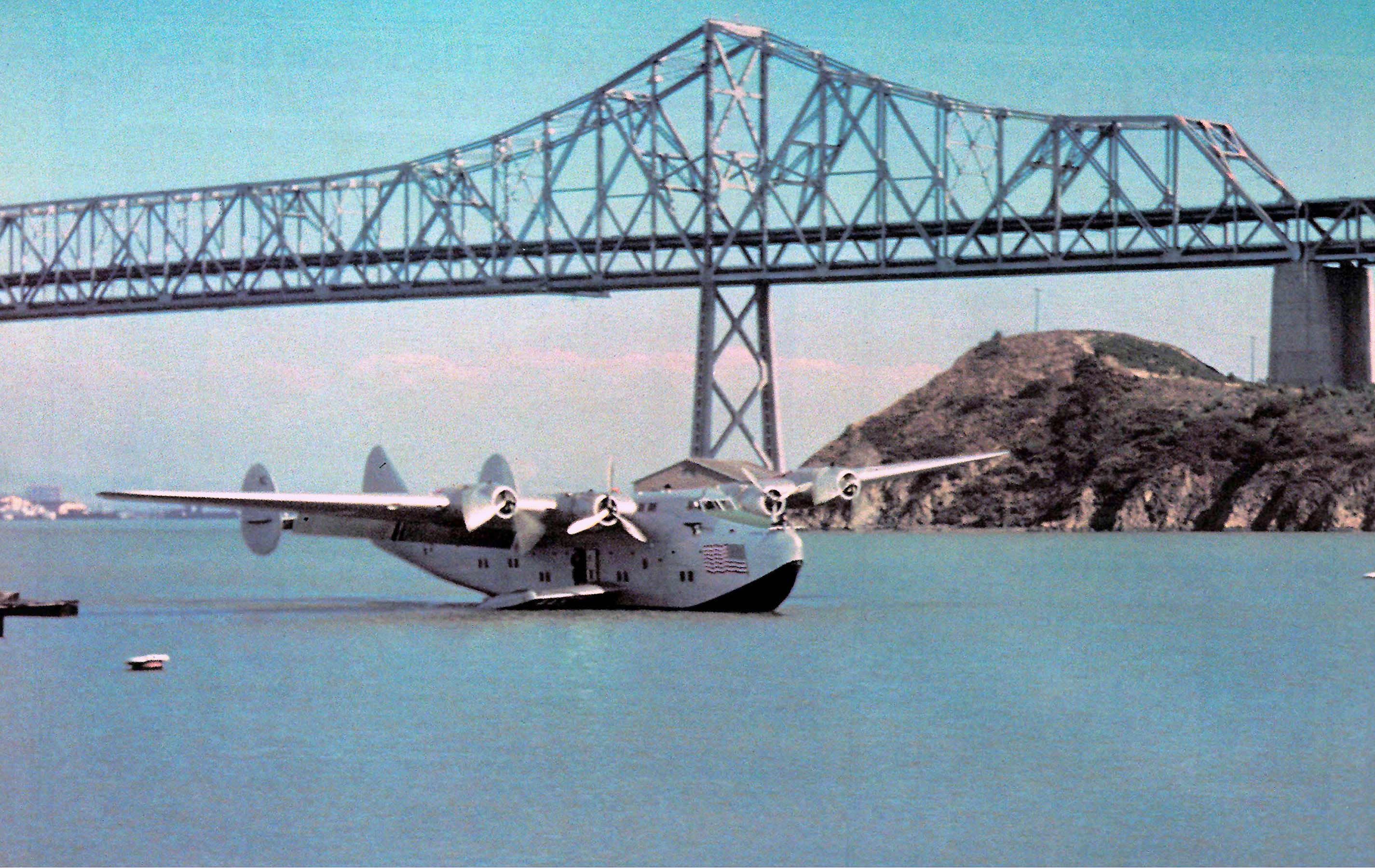
Bitten by the Aviation Bug
The year was 1939. I was 15 years old. That summer my parents, my sister, and I drove to San Francisco to visit the Golden Gate Exposition on Treasure Island. As we came off the Bay Bridge onto Yerba Buena Island and proceeded down the causeway to Treasure Island, something bright and shiny caught my eye. There, in all its glory, sat a Pan American Boeing B-314 Clipper flying boat moored to the dock in the lagoon. Little did I know then, that, four years later, I would be stepping on board a Boeing Clipper as a full-fledged member of the crew!
How did that happen? In 1935 our family moved from New York to California. We settled into a small house in the Los Angeles suburb of Lennox. The house was about a quarter of a mile from what was then called Mines Field - a small airport which ultimately grew into LAX International! As a result of that proximity to an airfield I became fascinated with flying. But the idea of taking flying lessons and becoming a pilot was not to be.
Due to financial constraints at the time, it was not possible to consider going on to college. As an alternative, after high school, I enrolled in what was then called the Frank Wiggins Trade School (today it would be considered a vocational school) where I studied radio engineering. My goal was to earn my FCC radio engineer license and then find a job with a radio station. By the time I graduated with my FCC Second Class Radio Telegraph License, it was the Fall of 1942 and the war was in full swing.
It was about this time that a personnel representative from Pan American Airways came to the school to recruit flight radio officer trainees for Pan American Airways. We learned that Pan American had plans in place to turn over all of its famous flying boats to the Navy for use during the war. Pan Am would operate the flying boats under contract to the Naval Air Transport Service, providing air transport for military personnel and supplies between San Francisco and Hawaii and through the South Pacific to Australia. They needed additional flight crews in order to carry out their flight schedules. When they offered us immediate jobs upon graduating with our FCC licenses, several of us signed up. That November I left home for what was to become the first step toward my career in aviation and radio communications.
Hired on at Pan Am
Ed dressed for work in his Pan Am uniform (Courtesy of Ed Dover).
Ed dressed for work in his Pan Am uniform (Courtesy of Ed Dover).
Despite that foreboding introduction to flying (see First Time Aloft), I eventually did fly to Pearl Harbor for my initial ground assignment. By late 1943 I was permanently assigned to flight duty. I always looked forward to my flights on the B-314. Certain visual memories are with me to this day.
As I describe in The Long Way Home (revised edition) one of the fondest is the view from the navigator’s dome at night as we climbed westbound into the evening sky: “The great expanse of wing extended left and right, tapering to slender tips. The transparent blue exhaust flames flickered out behind dull-red exhaust stacks. Above, the blackness was studded with uncountable stars across the entire hemisphere of sky." ... and the view aft, along that great fuselage to the beautiful triple tail, framing the Golden Gate Bridge and the Bay as the ship climbed away into the night.
One view that I always enjoyed almost got me fired! When we departed Honolulu for the return flight to San Francisco, I would sometimes look out of the navigator’s dome to see Diamond Head as we flew past Waikiki and turned on course to the northeast. I was somewhat of a photography buff and had a small camera with me. On one of these flights I stood on the ladder looking out of the dome and snapped a couple of pictures of Diamond Head as we passed.
Apparently one of the crew members saw me do this and reported it to the Captain. When we got to San Francisco, I was called into the office and given a real dressing down for taking those pictures! It was almost as if I was suspected of being a spy! Taking photos in and around the Hawaiian Islands during those early days of the war was strictly forbidden. They confiscated my film but let me keep the camera. I was let off with a stern warning! I never tried that trick again!
Another interesting action involved keeping the B-314 on an even keel when taxiing in strong crosswinds. This was very common at Honolulu; especially after flight operations were moved from Pearl City to Keehi Lagoon adjacent to the newly built John Rodgers land airport (later to become Honolulu International).
The seaplane runway was oriented northeast to southwest. The strong trade winds blew mainly from the east. As the B-314 taxied away from the dock it had to turn right to go to the takeoff end of the channel. As it did so, the port wing came under attack from the strong crosswind.
If the wind was strong enough it could tip the flying boat and cause the downwind wing to dip into the water. To prevent this, the Captain took advantage of one of the B-314’s unique features: the leading edges of the wings were thick enough so that catwalks were installed there and flight crew members could get out to the engine nacelles in flight. The Captain assigned three or four husky crew members, not otherwise occupied, to climb into the port wing, crawl along the catwalk and sit in the work space behind the number one engine. This weight was enough to hold the wing down into the wind.
Handling a flying boat on the water could be tricky (PAHF collection).
Handling a flying boat on the water could be tricky (PAHF collection).
Once at the end of the channel the ship was turned around to face the takeoff direction. As it did so, it was now the starboard wing that came under the influence of the wind. At a signal from the Captain, we scurried out of the port wing, across the rear of the flight deck, and into the tunnel of the starboard wing and sat in the workspace for the number four engine while the final engine and flight control checks were made. When all was ready for takeoff the Captain ordered us out of the wing and the takeoff would begin.
It was always a very hot, humid, and noisy assignment: sitting there with the firewall of that 1600 horsepower engine only inches from our faces, looking down between our feet through slots in the nacelle, to see the blue-green waters of Keehi Lagoon slipping by. I often wondered, as we sat there, what it would have felt like had the Captain forgotten about us huddled in that engine nacelle, and had gone to full takeoff power. Very hot and very deafening would not begin to describe it! Fortunately, he never did, and we always came out of the tunnel in time to take up our assigned positions for takeoff.
By July, 1945 the war was winding down and the Naval Air Transport contract was terminated. Advances in aircraft design, communications, and navigation quickly propelled us into the beginnings of what is now the highly developed, sophisticated air transport system we have today. But for all its technical advantages, nothing will ever compare to the thrill of those days of the great flying boats, and especially the thrill of crossing the oceans in the Boeing-B-314 - considered to be the “jumbo” flying machine of its day, and the ultimate icon for the “Golden Age” of commercial aviation.
Pan Am 1942-1948
Besides working on board the aircraft. Pan Am’s radio operators also did duty as ground station operators at their various en route stations. I was assigned temporary duty as a ground station operator at the Pan Am base at Pearl City in Pearl Harbor. I do not recall the date, but my second flight was on board one of the Navy PB2Y3s from Treasure Island to Pearl Harbor. This flight was uneventful and routine. It took about 18 and-a-half hours.
The Pearl City base was located on the shoreline and we had a good view of the harbor. Most of the wreckage from the December 7th attack had been cleared by then but there were still some bits of it visible. The Pan Am personnel were housed in a large mansion on the waterfront. I was assigned an upstairs bedroom. The Navy ran the commissary and mess hall.
After a couple of months at Pearl City I was transferred to another ground station at Noumea, New Caledonia. This was my introduction to the small atolls and islands of the South Pacific. Our flight route took us to Palmyra Island, Canton Island, Suva, Fiji and Noumea. It took three days, island hopping from Pearl City. I thought it was a wonder of modern technology!
My time at Noumea was fairly routine. There was one incident, however, that was far from routine.
I was on duty in the radio room one afternoon. I was seated at the desk with my back to the open window which faced the harbor. Suddenly there was a loud explosion and a concussion that sent me flying out of my chair onto the floor. I was not hurt, but after a few seconds of crouching, not knowing what to expect next, I slowly rose up and looked out the window. Far across the bay there was a huge fire. Something had apparently exploded. It was not until sometime later that we learned that an ammunition ship had exploded.
Apparently they were unloading live ammunition from the ship onto the dock. Some of the shells had slipped or fallen from the ship’s crane onto the dock and exploded, causing a chain reaction amidst the ordnance already on the dock. The entire place went up in one gigantic blast. I don’t recall exact figures, but there were many casualties. And the loss of all that ammunition was a severe blow to the military supply. I don’t know if this incident ever received news coverage back home. Most likely it was kept secret as a security measure.
Scenes from Noumea, French New Caledonia: Noumea was on Pan American's route to New Zealand beginning in 1940, and remained an active Pan American base during the war. Naval Photographic Center footage, April 8, 1943 (ACTIVITIES FL. AIR WING 1, ILE NOU, NOUMEA, US National Archives and Records Administration 428.NPC.755).
I returned to flight duty sometime around the end of 1943 or the beginning of 1944; I do not recall an exact date.
By the time I returned to San Francisco Pan Am had moved its base of operations to the Marine terminal at Mills Field, south of San Francisco. I located a rooming house just south of downtown San Francisco. The address was 900 Ashbury Street. It was about a three block walk down a very steep hill to the streetcar line that ran on Haight Street. I was three blocks from the intersection of what was to become known as “Haight-Ashbury” to legions of hippies that invaded the neighborhood after the war.
Pan Am crews flew Martin PBM “Mariners” during the War. Martin PBM Mariner (Courtesy of AeroArt).
Pan Am crews flew Martin PBM “Mariners” during the War. Martin PBM Mariner (Courtesy of AeroArt).
This change was not only a great geographic change, but also an operational change. Pan Am was no longer using flying boats but had made the transition to land planes.
The first of these that I flew on was the Douglas DC-4, or, as the Air Transport Command referred to them, the C-54. It took me a while to get used to landing on hard runways instead of on the water.
While still under the Africa-Orient Division contract, we flew two main routes. The first was from LaGuardia to Bermuda and then to Lages Island in the Azores, in the middle of the South Atlantic, and then to Casablanca. The other route was from LaGuardia to Stephenville, Newfoundland, then to Shannon, Ireland and then to London. These northern flight routes sometimes extended to Brussels and Paris.
A Sudden Awakening Over Bermuda
One of my more memorable flying experiences occurred during a flight from Lages in the Azores to Bermuda. We were in a Douglas C-54 on an Africa-Orient contract flight shortly before that wartime contract was terminated. Now, to understand the circumstances of my story I have to fill you in on what occurred just prior to this flight.
The military base at Lages was located at some distance from the main populated areas of the island. As a result, recreational facilities during layovers were rather sparse. One of the more popular pastimes for the flight crews was to play poker in the ready room of the barracks where we were billeted. This activity became well known as one of the longest, continuous poker games going. As flight crews arrived for overnight billeting they would join the game and play as long as their schedules and flight assignments allowed.
It was common for some players to stay in the game all night and into the next morning, quitting only in time to pack and get ready for their next flight assignment. So it was that the pilots and navigator of my flight had been playing poker all night before leaving the next morning on our scheduled flight to Bermuda. I was never a very good poker player, so my part in the game ended early enough so that I managed to get a good night’s sleep before leaving with them for the flight.
Pan Am Douglas DC-4 at Casablanca, later 1940s (PAHF collection).
Pan Am Douglas DC-4 at Casablanca, later 1940s (PAHF collection).
Everything was routine and normal. As we went past our “point of no return” I began tuning in the radio navigation beacon at Bermuda. At first the signals were weak and fluctuating. As we got closer they became stronger and the bearings became steadier and more accurate. I began plotting the bearings on the navigation chart. Meanwhile, the navigator was seated at one end of the navigation table, his head down on his arms on the table, apparently taking a little nap. At the same time I noticed that both the pilot and co-pilot were seated in a rather relaxed manner with their heads back against the headrests and their eyes closed. The C-54 was approaching Bermuda on autopilot at an altitude of 8,000 feet.
I continued plotting the radio bearings. Very soon the signal was so strong that the needle on the automatic direction finder stopped fluctuating and stood stock-still pointing dead ahead. I knew we must be very close to the island. I had just about decided to alert the navigator and pilots that we seemed to be closer to our destination when the needle suddenly fluctuated wildly, swung around 180 degrees and stood stock still - pointing directly aft. We had just passed Bermuda! I shook the navigator’s shoulder, went forward to the cockpit and woke up the napping pilots. When they realized that we were overflying our destination they became fully awake. What followed was one of the steepest, rapid spiral dives to a landing that I have ever experienced!
Now comes the “what-if ’ part: What if I, too, had played poker all night? What if I had decided that a little nap en route would do no harm? What if we had over-flown our destination continuing on over the trackless ocean until our fuel ran out? What if Ernie Gann was right when he titled one his more famous books as “Fate is the Hunter?”
In August, 1945 the atomic bombs were dropped on Hiroshima and Nagasaki and the Japanese surrendered, ending the war in the Pacific.
I happened to be in Times Square in New York on the night the word came through. Happy pandemonium ensued!
Where’s Ed Dover?
Times Square: "Crowd of people, many waving, in Times Square on V-J Day at time of announcement of the Japanese surrender in 1945" End of B-314 Memories Pa e. Go to Part Two!
From Ed Dover:
“My major project, however, has been researching and writing a book about a very famous flight that occurred right after Pearl Harbor, when a Pan American Boeing B-314 was caught in the South Pacific and had to make an impromptu round-the-world flight westbound from New Zealand in order to return safely to the United States.
The initial research, interviews with some of the Pan Am flight crew who were on that flight, and the writing has taken most of my time since 1992. The result has been “The Long Way Home - Revised Edition.”
For more about Ed’s book listen to "The Long Way Home," podcast episode 196, at Futility Closet https://www.futilitycloset.com/2018/04/16/podcast-episode-196-the-long-way-home

